The Trajectories of the Israeli Ground Operation in Lebanon
The Israeli ground operation in southern Lebanon is shrouded in ambiguity from both sides. There is a lack of clarity regarding Israel’s objectives, the intended stopping point of its advance, and the next steps in the operation. Additionally, there are uncertainties about the latent capabilities that Hezbollah might employ to increase the costs of this incursion.
by STRATEGIECS Team
- Release Date – Oct 17, 2024
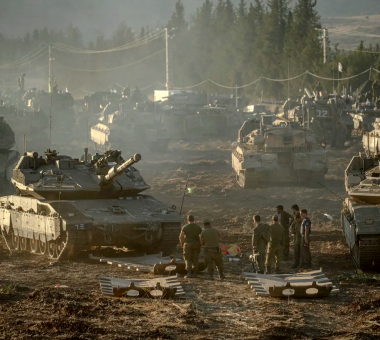
After a series of precision-planned assassinations of key Hezbollah leaders, culminating with the murder of Secretary-General Hassan Nasrallah on September 27, the conflict between Hezbollah and Israel entered a new phase in early October when the Israeli army launched ground operations into southern Lebanon. Not coincidentally, this escalation was preceded by the exposure of a major security breach within Hezbollah ranks, impacting its operations in both Lebanon and Syria.
Initial indicators suggest that Israel’s objectives for the ground operation extends beyond enforcing UN Resolution 1701. Instead, it appears that Israel may seek to resolve the conflict decisively, setting the stage for new regional arrangements and altering the political and military balance. This shift implies that the ground operations could expand beyond the Litani River, a buffer zone between Hezbollah and Israel that runs parallel to Lebanon’s border with Israel, into other areas where Hezbollah is active.
The Contexts and Strategies of Escalation Between Israel and Hezbollah
The recent escalation between Israel and Hezbollah emerged from accumulated tensions and limited confrontations following the outbreak of the war in Gaza. However, the conflict intensified significantly due to the differing interpretations each side had of these developments.
Initially, Hezbollah’s involvement began as a support front for Palestinian factions in Gaza through limited skirmishes intended to drain Israel’s resources without triggering a full-scale war. However, the escalation evolved into a more complex phase of mutual tit-for-tat actions, governed by the established rules of engagement between the two sides.
Israel managed to regain the initiative on the Lebanese front through targeted strikes on Hezbollah’s infrastructure, leadership, and several weapons storage facilities. The escalation has since culminated in ground operations and daily incursions by Israeli forces into villages in southern Lebanon.
Hezbollah sought to maintain its deterrence and defense mechanisms, ensuring that Israel remained cautious of escalating the conflict further. By adopting a strategy of balanced retaliation, Hezbollah aimed to demonstrate its deterrence capability and readiness for war if necessary. A key element was media messaging, which Hezbollah used to emphasize its surveillance of strategic locations within Israel, thereby reinforcing its preparedness for confrontation. This served both as a psychological tactic and a way to deter further escalation.
At the same time, Hezbollah limited its rocket attacks to military targets, avoiding civilian areas to prevent Israel from framing the situation as a pretext for a large-scale conflict. This measured response also reflected the precarious situation in Lebanon, which faces severe challenges, including political instability, a temporary government, and economic crises marked by the lack of a president and a central bank governor.
Israel views Hezbollah’s participation in the conflict as part of a broader Iranian agenda to undermine Israeli security. The group’s possession of advanced weaponry, drones, and precision missiles of varying ranges has heightened Israel’s concerns. In response, Israel adopted a preemptive strike strategy to prevent Hezbollah from initiating attacks from the Galilee region similar to the events of October 7, 2023.
During the initial months of the conflict, Israel focused on assassinating field commanders from Hezbollah’s units in southern Lebanon. This strategy later expanded to creating a structural vacuum by targeting the group’s top leaders and operational logistics. Israel sought not only to limit Hezbollah’s ability to take the initiative but also to expose it to serious existential risks. This shift in policy reflects ambitions beyond Israel’s earlier goal of enforcing UN Resolution 1701, which sought to limit Hezbollah’s military activities. Israel now appears to be pursuing the disarmament and maximum weakening of Hezbollah, both within Lebanon and across the broader regional stage.
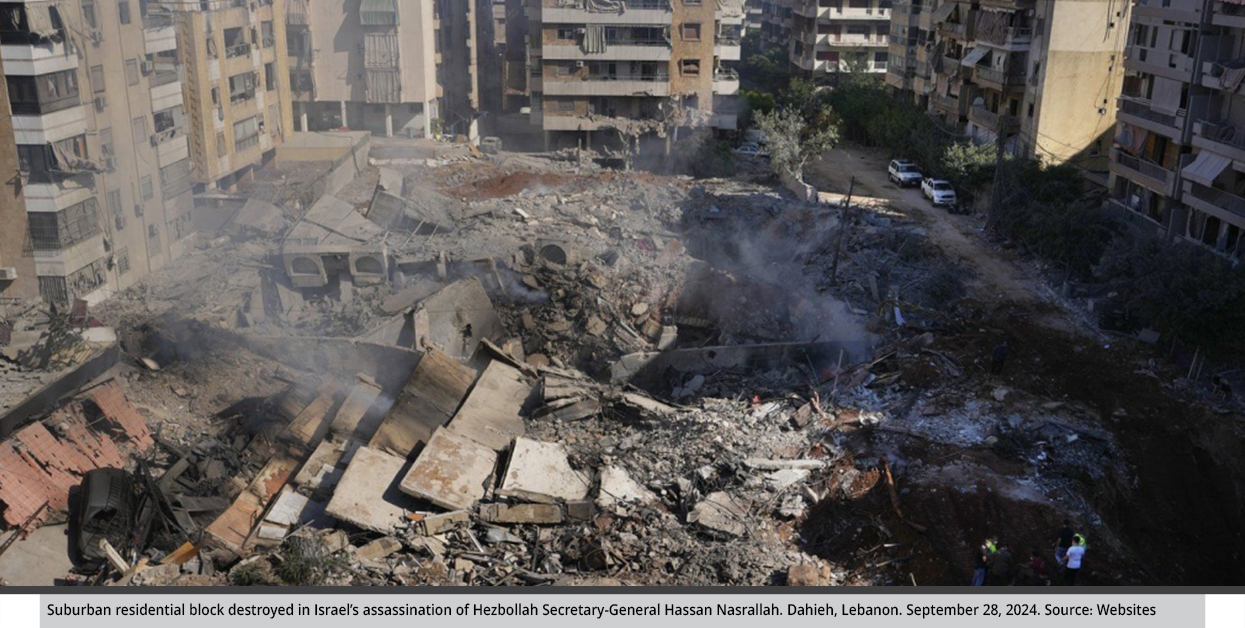
Israeli Ground Operation in Lebanon
In early October this year, the Israeli army commenced limited ground incursions into southern Lebanon in an operation it called “Northern Arrows.” Its primary goal is to dismantle Hezbollah’s infrastructure along the border and reduce the threat of short-range rocket attacks. This military strategy aims to facilitate the return of Israeli settlers to their communities in northern Israel.
This operation followed a significant military shift, as Israel transferred its operational focus from the Southern Command, which was engaged in the Gaza conflict, to the Northern Command, responsible for operations in Lebanon. Under this command, five military divisions are currently deployed: the 98th, 91st, 36th, 146th, and 210th.
In fact, Israeli tactics in the villages along the border resemble those employed in the Gaza Strip. Israel has issued evacuation orders to residents of these villages. On October 16, Israeli forces completely destroyed the village of Muhaybib, located on the border. This appears to be part of Israel’s strategy to deplete these villages of their infrastructure, creating a challenging environment for Hezbollah operatives in the area and limiting their ability to access the border strip.
In the future, this tactic is expected to increase the costs for Hezbollah in targeting Israel from villages along the route from the Litani River to the border, as these areas will likely face further Israeli evacuation orders and destruction. Additionally, Israel aims to keep Hezbollah and its supporters in a state of shock and frustration, periodically releasing videos showcasing underground tunnels, seized weapons, and interrogations of captured operatives.
Despite the loss of its leadership structure, Hezbollah has shown resilience on the ground. The deployed battalions appear to be operating with autonomy and maintaining only limited communication with central command. This decentralized approach has allowed the group to continue launching wide-scale rocket attacks on northern Israel and Haifa, as well as targeting artillery positions and engaging Israeli forces stationed along the border.
Hezbollah has also carried out special operations, such as the October 14 attack on a training camp belonging to the Golani Brigade, demonstrating that it retains offensive capabilities. Naim Qassem, Hezbollah’s acting secretary-general, asserted in a recent speech that Hezbollah’s military strength remains intact and that Israel has made no significant progress since beginning its ground incursions into southern Lebanon.
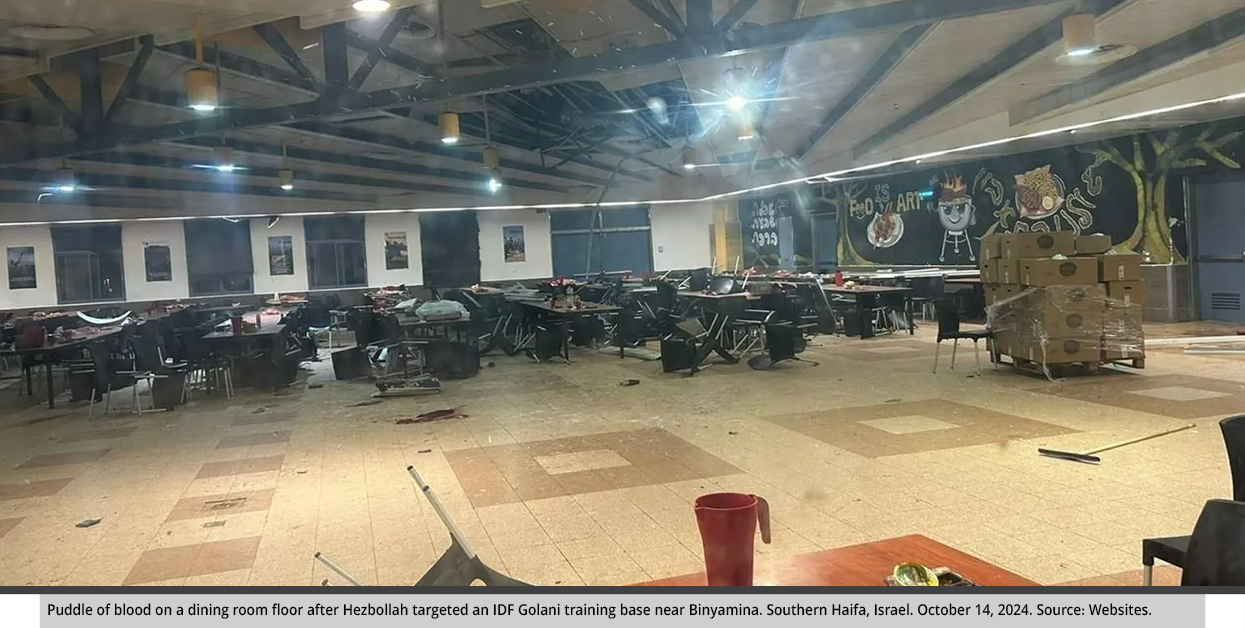
Expected Trajectories of the Israeli Ground Operation
The ground operation is still in its early stages, shrouded in significant ambiguity regarding Israel’s objectives, the point at which it intends to halt, the next steps it plans to take, and the countermeasures Hezbollah might employ to raise the cost of the incursion.
The confrontations on the ground appear more complex than the rapid results of air operations, especially given the mountainous terrain in the south that offer the defender an advantage over the adversary. Additionally, Hezbollah fighters have gained considerable experience from their involvement in external conflicts, particularly in Syria. This is especially true of Hezbollah’s elite Radwan Force, which retains the capability to lure Israeli soldiers into ambushes despite the assassinations that wiped out its leadership structure.
Ultimately, the operational capabilities of both sides will shape the scenarios and decide the future of the Israeli ground operation, as well as the substance of its objectives.
First: Establishing a Security Belt Controlled by Israel
The systematic incursions and destruction of border villages reflect Israeli intentions to establish a security belt along the 100-kilometer (62-mile) Lebanon-Israeli border, with a depth of up to 5 kilometers (3 miles). Most Israeli strikes have focused on this geographic area. According to an investigation published by the Financial Times in late June, Israel used the incendiary chemical white phosphorus in these attacks to render the area uninhabitable and unsuitable for agriculture.
Israel’s belief in the utility of security belts has grown since the outbreak of the war. It has expanded the buffer zone along the Gaza Strip border by one kilometer into the territory. Reports also indicate that Israeli forces are constructing a “safe fence” extending 200 meters (656 feet) into Syrian territory.
The likelihood of pursuing a security-belt trajectory is supported by frequent statements by Israeli officials about the limitations of their military incursions. They have indicated that ground forces face numerous constraints in conducting a wide-scale ground campaign, including a shortage of tanks announced by the Israeli military July 15 and new measures revealed October 13 to manage heavy ammunition due to depleted reserves.
Additionally, the exhaustion of both regular and reserve Israeli soldiers, who have been engaged in operations in Gaza for the past year, poses a significant challenge that would only be exacerbated if Israel were to launch a large-scale ground incursion into Lebanon.
Second: Israel Withdraws But Maintains Its Operational Freedom
This trajectory takes into account the challenges the Israeli army may face during its ground incursion, including the potential increase in material, human, and military costs, along with the difficulties of maintaining control over border areas in Lebanon or successfully establishing a secure buffer zone. These obstacles raise concerns within Israel about being drawn into a protracted war of attrition that could last for years.
Given Hezbollah’s intent to reorganize its ranks and the interim secretary-general’s suggestion that Hezbollah might agree to implement UN Resolution 1701, Israel may opt to accept the resolution with modifications. These changes would grant the Israeli military operational freedom in the southern border areas and prevent Hezbollah from rebuilding its infrastructure along the frontier.
Israeli officials have previously criticized the UN Interim Force in Lebanon (UNIFIL) as ineffective. To emphasize this point, the Israeli army recently brought foreign journalists to document a Hezbollah tunnel opening located just 200 meters (656 feet) from a UNIFIL camp. Such actions might signal preparations for pushing amendments to the UN resolution that was adopted in July 2006.
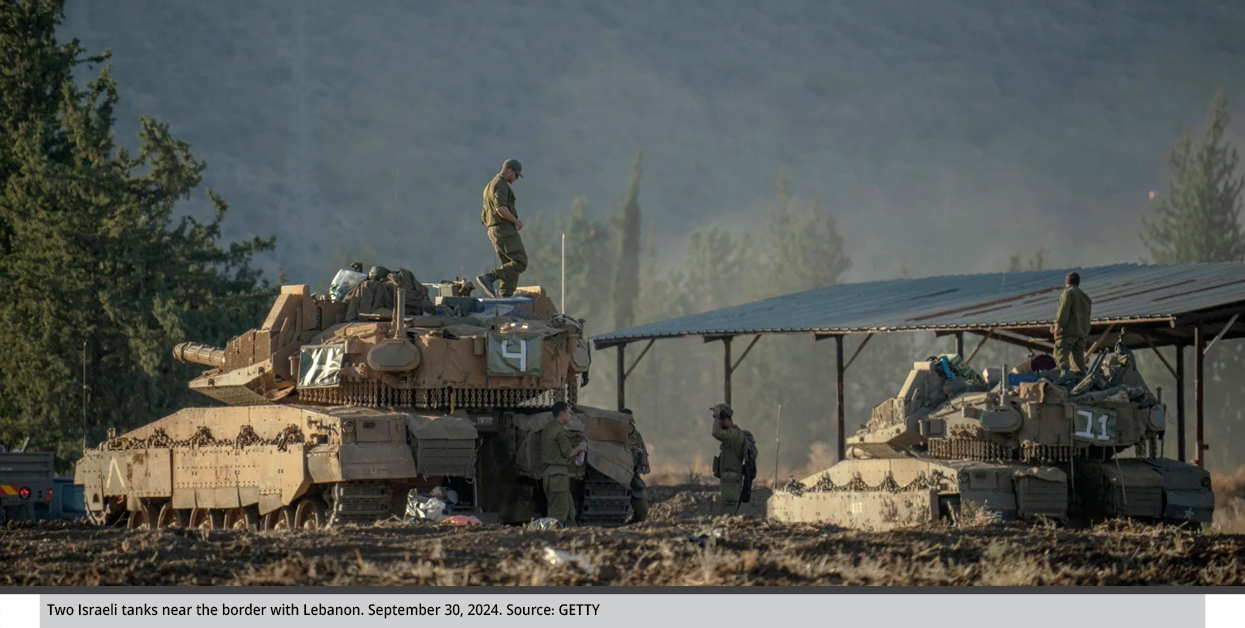
Third: Incursion into Southern Lebanon
The slow pace of Israeli ground incursions in southern Lebanon suggests that the army is still in a reconnaissance phase, closely monitoring Hezbollah’s defensive tactics and attempting to uncover bunkers, tunnels, and military positions. This preparation aims to pave the way for a large-scale ground assault, deploying a variety of Israeli forces to penetrate deep into southern Lebanon, particularly into Hezbollah’s traditional strongholds there.
Israel recognizes that the first and second trajectories alone will not ensure complete security for its settlements, especially against long-range threats such as missiles and drones. Achieving such security requires comprehensive military action throughout southern Lebanon that weakens Hezbollah on the battlefield and further dismantles its structure.
One of Israel’s clear objectives is the elimination of Hezbollah’s Radwan Force. Key figures within this force have already been assassinationed, including its field commander Wissam Al-Tawil in January 2024, and Ibrahim Aqil, the force’s founding commander, and 20 other unit leaders, including senior training officer Ahmed Wahbi, in September 2024.
Fourth: Operational Expansion into Lebanese Interior
The operational success of the first and third trajectories and the continuation of a limited response by Hezbollah may lead Israel to expand its objectives in the Lebanese interior and its capital, Beirut. This shift will expand the Israeli objectives in the war beyond the armed factions in Gaza strip and Hezbollah in Lebanon to include the “Unity of Arenas” in which Hezbollah plays a key role.
Israel has already intensified its targeting of Hezbollah across its areas of operation, particularly in Syria. This strategy makes the southern suburbs of Beirut, particularly Dahieh, a Hezbollah stronghold, a prime target for weakening the group, stripping it of legitimacy among its support base, and diminishing its standing with other Lebanese factions.
An assault on Hezbollah’s bases in Dahieh may not necessarily take the form of a direct ground incursion. Instead, it could involve rapid airstrikes, aerial insertions, and swift special forces operations. This approach would allow Israel to inflict maximum damage while minimizing exposure, leveraging its airborne units and special operations forces for quick, high-impact missions.
Despite Israel’s operational and intelligence superiority, these trajectories are surrounded by several complexities both on the ground and in terms of regional and international dynamics. While Hezbollah continues to demonstrate its capability to counter Israeli ground incursions, with increasing signs of quick recovery from previous strikes, regional powers and the international community are becoming more aware of the expanding scope of Israel’s objectives, which could plunge the region into unprecedented turmoil. The United States, for instance, has opposed Israel’s airstrikes on Beirut and is actively trying to prevent it from targeting the capital and its southern suburbs.
These pressures are likely to intensify the longer the ground incursion into Lebanon drags on, especially since a quick resolution is unlikely given the numerous challenges on the ground.
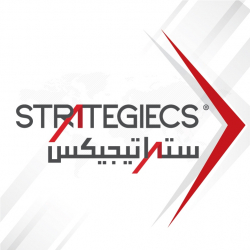
STRATEGIECS Team
Policy Analysis Team
 العربية
العربية